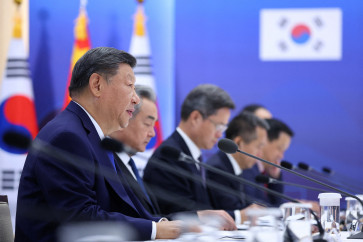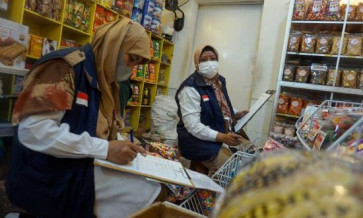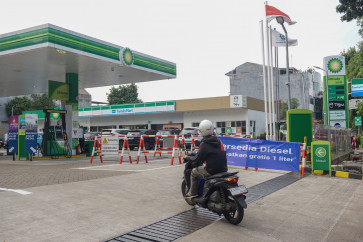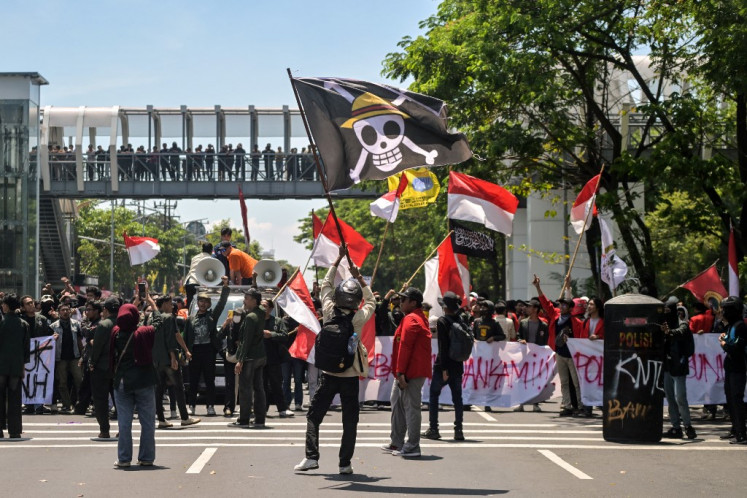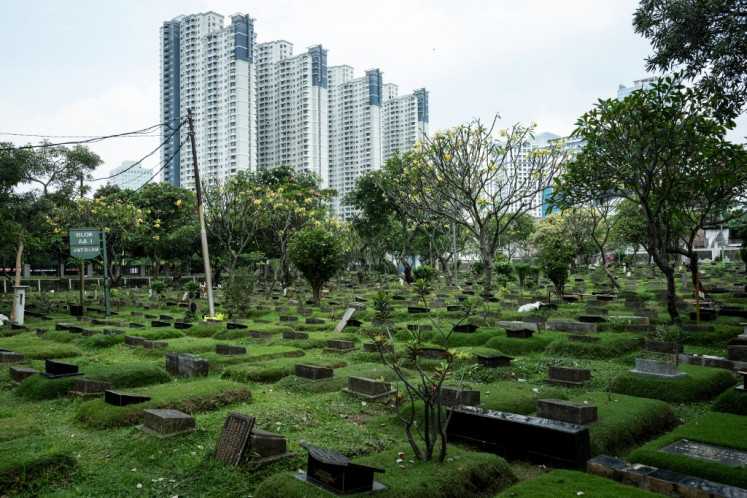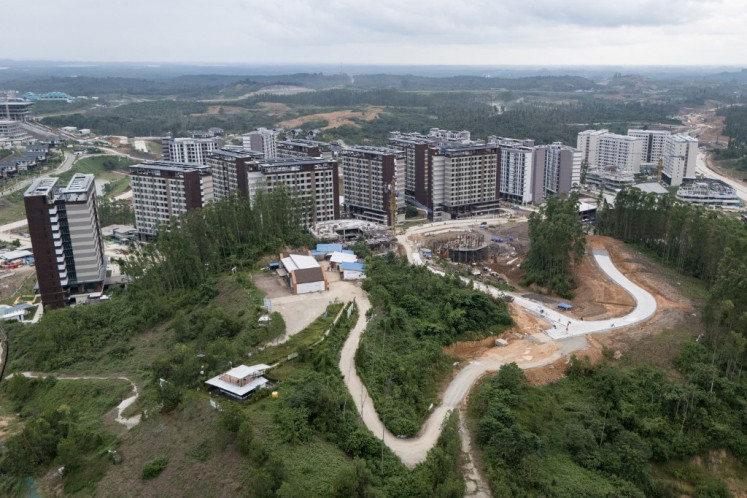Popular Reads
Top Results
Can't find what you're looking for?
View all search resultsPopular Reads
Top Results
Can't find what you're looking for?
View all search resultsCelebrating Junghuhn
Sumatran adventure: While doing a commission to study the land of the Bataks and produce a map of the region, Junghuhn was also able to capture the landscape of the area through lithography works
Change text size
Gift Premium Articles
to Anyone
S
span class="caption" style="width: 396px;">Sumatran adventure: While doing a commission to study the land of the Bataks and produce a map of the region, Junghuhn was also able to capture the landscape of the area through lithography works.
If you happen to stroll north of the West Javanese town of Bandung and roam the meandering lanes of Lembang, you might stumble upon an alley with an unlikely name: Junghuhn.
Inside a small park in that alley, you will find a monument, which just like a tomb, bears a foreign name: Franz Wilhelm Junghuhn.
Jung who?
Just like the monument, which is hidden under tall green foliage, Junghuhn has long been eclipsed by bigger names such as Raffles or Marsden.
Some of you may recognize the name, which was briefly mentioned in our history textbooks as the “father of kinine”. But there is much more to Junghuhn, as an exhibition at Erasmus Huis, which runs until January next year, reveals.
Jointly held by the Goethe Institute and Erasmus Huis, the exhibition aims at celebrating the bicentenary of the explorer of Java.
It’s difficult to put a label on Junghuhn. He’s a botanist, but also a litograph artist. He’s a cartographer, but also a photographer. Set all the labels aside, the German-Dutch was a man thirsty for adventure in nature.
F.W. Junghuhn
“Junghuhn was a lone adventurer at heart. His social life was full of controversy, but his aim in life seemed to be to explore nature. And Java was his playground,” Goethe Institute director Franz Xaver Augustin said prior to the exhibition.
After years of exploration, Junghuhn contributed his part in enriching the then-limited documentation available about Java, through his research papers on botany and his meticulously detailed map of the island.
Born in 1809 in Mansfeld, Germany, Junghuhn initially studied in the medical field, even though he had always been keen to study botany. After dropping out of university in Halle, which led to a fight with his father and a suicide attempt, he embarked on botanical excursions in the Harz Mountains, marking the start of a tumultuous life filled with dramas.
Junghuhn soon ended up behind bars, following a brawl in a tavern. After two years, he escaped prison not knowing that he had actually been pardoned, and walked his way across France, until he eventually landed an offer to work in then-Dutch East Indies.
So off he went, on an adventure to Indonesia.
In October 1835, the naturalist arrived in Batavia and later took on a post as a doctor in the military hospitals of Weltevreden and Yogyakarta, while still dabbling in botany and making drawings as he went for excursions in various spots in the island including Mount Merapi and Mount Merbabu.
In 1837, along with amateur geologist Fritze, Junghuhn embarked on a journey from Batavia all the way to East Java’s Banyuwangi. From Daendels’ Anyer-Panarukan Grote Postweg, the duo explored deeper inland areas.
Unlike today’s well-trodden backpacking trail across the exotic island, Junghuhn’s journey across Java was a scientific one, where he painstakingly documented every detail he came across.
Underrated cartographer: Foreshadowed by Raffles, Junghuhn’s detailed map of Java is less known despite it being richer in visual information that serves as the basis for modern cartography of the island.
Junghuhn’s map of Mount Ciremai accompanied a drawing of a rhinoceros path he found on the volcano slope. In Mount Pangrango, he discovered a flower he named Primula Imperialis Jungh.
“Our admiration was aroused at the sight of the path made by the rhinos, leading across the highest of peaks. One cannot view these paths without astonishment, when one thinks of the enormous size
and the plump form of these animals, who are nonetheless such excellent mountaineers,” he wrote of his experience.
One can retrace his extraordinary journey by reading his diaries Journey through the Western Provinces of Java and Journey through the Eastern Provinces of Java, as well as by examining the very detailed map of the island he later completed in 1855.

The 1840s brought another chapter to the German naturalist’s adventure as he explored Sumatra. On his way to Padang, he found an opportunity to study North Sumatra through an assignment to explore the lands of the Batak.
He was commissioned not only to make a map of the region and study its natural resources, but also to study the political views of Bataks, theirs language, customs and rites.
Coming back from his expedition where he spent most of his time tormented by dysentery and infections, Junghuhn submitted the “General Map of Central Sumatra” which was far from being just general. Accompanying the map were several lithographs of the landscape he came across.
Being the meticulous observer and researcher he was, Junghuhn sparked controversy with his published manuscript The Batak Lands of Sumatra in which he inserted critical remarks about colonial soldiers’ poor treatment of Javanese prisoners.
Meanwhile, in his Light and Shadow Images of Java, the naturalist criticized the introduction of Christianity in the island, a move that outraged Dutch clerics. Witnessing Mother Nature firsthand, Junghuhn believed nature alone was the “fountain of wisdom” and the only “godly manifestation.”
But, his critical remarks, his exploration of wilderness and his love of untouched nature, were at odds with his work as a forerunner for soldiers and planters.
He only briefly alluded to the expansion of colonial plantations as a contributing factor to deforestation. Instead he highlighted the “indifference of the Javanese,” along with population growth as the main cause of deforestation.
Yet, despite his flaws and controversies, Junghuhn’s contribution to documenting and mapping Java as well Sumatra is undeniable. Although until today it is still apparently underrated.
Junghuhn was a lone adventurer at heart. His social life was full of controversy, but his aim in life seemed to be to explore nature. And Java was his playground.
— Photos by Anissa S. Febrina




